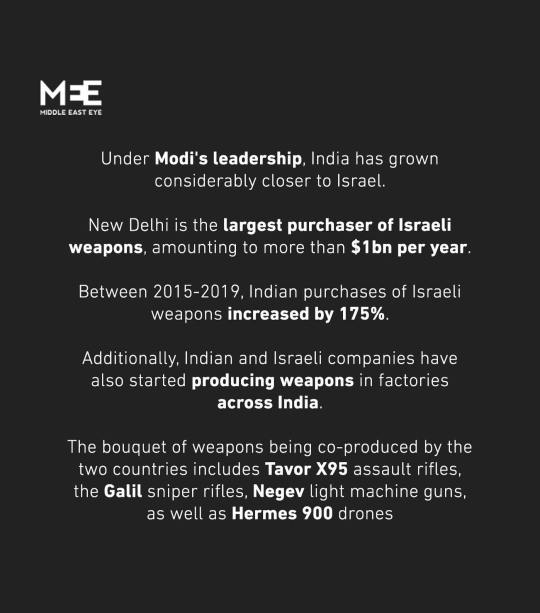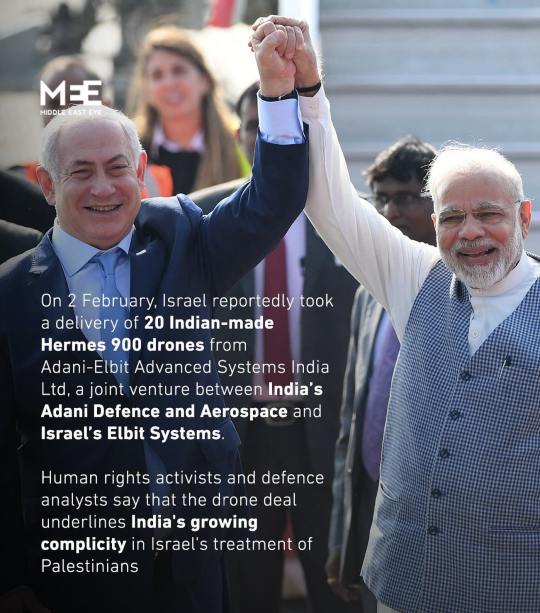#Indian Drone Industry
Explore tagged Tumblr posts
Text
IdeaForge's SWITCH MINI UAV Certified for Military Use
IdeaForge’ SWITCH MINI UAV Certified for Military Use: Mumbai, India – January 23, 2025 – ideaForge Technology Limited, a global leader in drone technology, today announced that its SWITCH MINI UAV has successfully obtained the prestigious “Fit for Indian Military Use” certification. This significant milestone, granted by the Directorate General of Quality Assurance (DGQA) following rigorous…
#ankit mehta#fit for military use certification#ideaforge#indian drone industry#Ministry of Defence#switch mini uav#UAS#UAV
0 notes
Text
Discover the Best Drone Companies: Atom Aviation and More

Introduction to the Best Drone Companies
The drone industry has evolved significantly over the past decade, with applications in everything from aerial photography to precision agriculture. Drone technology, with its ability to capture high-quality data, improve efficiency, and reduce human labor, has led to an exponential growth in its adoption across industries like construction, surveying, agriculture, and logistics. However, with so many companies offering drone services and products, it can be difficult to choose the right one for your needs.
In this guide, we will explore some of the best drone companies by Atom Aviation and other key players in the industry. From their innovative technologies to their service offerings, this article provides insight into how these companies are revolutionizing the drone sector and why Atom Aviation stands out among them.
Overview of Atom Aviation
Atom Aviation has emerged as a key player in India’s growing drone industry, known for its specialized services in drone surveying, mapping, and aerial inspections. Founded with the vision of transforming traditional industries through advanced drone technologies, Atom Aviation has become a leader in the drone services sector in India. Offering high-precision aerial solutions, the company caters to various industries, including agriculture, construction, real estate, and infrastructure, by providing top-notch surveying and inspection services.
One of the primary advantages of Atom Aviation is its integration of cutting-edge drone technology combined with years of industry expertise. The company’s commitment to maintaining high operational standards, including adhering to regulatory requirements, sets it apart from many competitors in the region.
With a fleet of advanced drones equipped with powerful cameras, thermal sensors, and LiDAR technology, Atom Aviation provides its clients with the ability to gather actionable data quickly and efficiently. The company’s offerings go beyond just drone flights—they provide end-to-end solutions, including data processing and analysis, ensuring clients get the insights they need from the collected data.
History and Milestones of Atom Aviation
Atom Aviation established itself in response to the growing demand for aerial data and mapping solutions in India. The company has marked its journey with a series of milestones, helping it become one of the best drone companies by Atom Aviation. Below are some of the key achievements in its history:
Foundation and Vision: Atom Aviation was founded by a team of aviation and technology enthusiasts who saw the potential for drones to revolutionize traditional surveying, mapping, and inspection methods. Their mission was to bring cutting-edge drone technology to Indian industries that were ripe for digital transformation.
Pioneering Drone Survey Solutions: Atom Aviation was one of the first companies in India to offer comprehensive drone surveying solutions. Their ability to provide accurate, high-quality data made them an early leader in the market.
Expansion of Services: As the demand for drones in different sectors grew, Atom Aviation expanded its offerings to include aerial inspections, 3D modeling, crop monitoring for agriculture, and construction site monitoring. This diversification allowed the company to broaden its customer base.
Certifications and Compliance: Atom Aviation quickly adapted to India’s evolving drone regulations. By obtaining necessary certifications from the Directorate General of Civil Aviation (DGCA), the company established itself as a trustworthy provider of commercial drone services.
Innovative Products by Atom Aviation
Atom Aviation’s continued success can be attributed to its dedication to innovation. The company offers a range of advanced products that ensure high-quality drone operations. Below are some of Atom Aviation’s key innovations:
High-Resolution Imaging Drones: Atom Aviation uses drones equipped with high-definition cameras that provide crystal-clear imagery. These drones are used for surveying, mapping, and visual inspections, ensuring that clients receive the most accurate data possible.
LiDAR Drones: Light Detection and Ranging (LiDAR) technology has become a game-changer for industries that require precision mapping and topographic surveys. Atom Aviation uses LiDAR-equipped drones to collect detailed 3D data for applications in construction, mining, and environmental studies.
Thermal Imaging Drones: The use of thermal sensors allows Atom Aviation to conduct night surveys, inspect infrastructure, and monitor temperature anomalies. This technology is particularly useful in detecting issues like heat loss in buildings, solar panel monitoring, and power line inspections.
Data Processing Software: Atom Aviation doesn’t just provide raw drone data but also offers processing tools that turn this data into actionable insights. The company uses advanced software that can analyze drone-collected data and produce detailed maps, models, and reports for clients.
AI-Powered Analytics: To further improve operational efficiency, Atom Aviation has incorporated Artificial Intelligence (AI) into its analytics services. AI-driven analysis helps process drone-captured images and video footage faster, enabling quicker decision-making and improved data accuracy.
Top Competitors in the Drone Industry
While Atom Aviation has made a name for itself as one of the best drone companies by Atom Aviation, it is not the only key player in the drone industry. Several other companies, both domestic and international, are shaping the future of drone technology.
DJI: DJI, a Chinese company, is the world’s largest drone manufacturer. It produces drones for both consumers and professionals, with a focus on camera drones for photography, videography, and mapping. DJI’s products are known for their reliability, ease of use, and high-quality imaging capabilities.
Parrot: A French drone manufacturer, Parrot is another notable competitor in the drone industry. Parrot offers a wide range of drones for both recreational and professional use. Their drones are particularly popular for agricultural and environmental applications.
Skydio: Skydio is an emerging American company that specializes in autonomous drones. Skydio equips its drones with advanced AI and machine learning technology, enabling them to fly autonomously and avoid obstacles in complex environments, which makes them ideal for inspection and surveying tasks.
Autel Robotics: Autel Robotics creates high-performance drones that cater to professional photographers and commercial operators. These drones come equipped with powerful cameras and advanced flight systems.
Yuneec: Yuneec produces drones for both consumer and professional markets. Their drones are particularly favored for industrial inspections, agriculture, and public safety applications.
Market Leaders: DJI and Others
Among the drone market leaders, DJI stands out due to its comprehensive range of drone models and its dominance in both the consumer and professional markets. With drones ranging from the entry-level DJI Mini to the highly advanced DJI Matrice, the company has become the go-to brand for both hobbyists and businesses looking for drones with exceptional camera quality, stability, and flight performance.
Despite DJI’s dominance, companies like Atom Aviation have gained traction by focusing on more specialized drone services that cater to industries requiring high-precision data collection and analysis. Atom Aviation’s expertise in drone surveying and inspection has allowed it to carve out a niche market, distinguishing itself from general drone manufacturers.
Emerging Companies to Watch
As the drone industry continues to expand, several emerging companies are innovating in various sectors. These companies have introduced novel technologies that may challenge established market leaders:
AeroVironment: Specializing in unmanned aircraft systems (UAS) for military and commercial applications, AeroVironment has become a key player in the defense sector. Its expertise in drone technology has expanded into commercial industries as well.
Delair: Focused on providing drone solutions for industrial applications, Delair is an emerging leader in aerial data collection. Their drones are used for mining, construction, agriculture, and more.
Quantum Systems: This German drone manufacturer has made a name for itself in the field of geospatial data collection and surveying. Quantum Systems produces drones specifically designed for precise surveying and mapping.
First Cockpit: Elevating Pilot Training with Atom Aviation
In addition to its drone surveying services, Atom Aviation is also the driving force behind First Cockpit, a dedicated platform focused on providing high-quality pilot training. As the demand for skilled drone pilots increases, First Cockpit offers specialized programs designed to equip individuals with the necessary knowledge and skills to operate drones safely and efficiently. Whether you are looking to pursue a career as a commercial drone operator or simply interested in gaining expertise in drone flight, First Cockpit provides comprehensive courses, certification programs, and hands-on training to ensure success in the rapidly growing drone industry. By combining the expertise of Atom Aviation with the training capabilities of First Cockpit, both platforms work together to build a strong foundation for drone technology and aviation careers.
Comparative Analysis of Drone Companies
Strengths and Weaknesses
When comparing Atom Aviation with other drone companies, the following strengths and weaknesses emerge:
Atom Aviation Strengths:
Specialized Expertise:- Atom Aviation is known for its specialization in drone surveying, mapping, and inspections. This focus has allowed the company to develop deep expertise in these areas, offering high-quality services that meet the needs of businesses.
Innovation:- Atom Aviation stays ahead of the curve by incorporating advanced drone technology, including LiDAR, thermal imaging, and AI-driven data processing.
Compliance with Regulations:- Atom Aviation follows the regulations set by India’s Directorate General of Civil Aviation (DGCA), ensuring that their drone services are legally compliant.
Atom Aviation Weaknesses:
Limited Consumer Drone Offerings: Unlike DJI, Atom Aviation does not cater to the consumer drone market. Its focus is primarily on commercial and industrial drone services.
Smaller Scale: Compared to global giants like DJI, Atom Aviation operates on a smaller scale, which limits its ability to scale rapidly.
DJI Strengths:
Wide Product Range: DJI offers a broad range of drones for different applications, from consumer photography drones to professional-grade surveying and mapping drones.
Global Presence: DJI has a strong global presence, with its drones being used by millions of customers worldwide.
DJI Weaknesses:
Limited Focus on Industrial Applications: While DJI excels in consumer drones, it is not as focused on specialized commercial services like Atom Aviation.
#Drone Companies in India#Best Drone Companies in India#Top Drone Manufacturers in India#Indian Drone Industry#Aerial Technology in India#UAV Companies in India#Drone Innovations India#Drone Startups India#Commercial Drones in India#Future of Drone Technology in India#Indian UAV Industry Leaders#Drone Technology for Agriculture in India#Drone Companies in India for Surveillance#Indian Drone Market Trends#Drone Solutions for Business in India
1 note
·
View note
Text










#india#modi#predator drones#Indian drones#partnership from hell#blood money#military industrial complex#apartheid#save palestine#ethnic cleansing#israel is an apartheid state#seek truth#free palestine 🇵🇸#genocide#illegal occupation#israel is committing genocide#israeli war crimes#ask questions#raise awareness#india and israel#indian military#why now?#hermes 900#hermes drones#adani elbit
11 notes
·
View notes
Text
By Lallan Schoenstein
India’s economic growth is not only supported by U.S. investment, it is closely tied to Israel and the Zionist military. It funds the Zionist regime with $3.7 billion a year. An Indian company owns the Haifa Port. Workers from India are recruited to replace the Palestinian workers from the West Bank. Indian police train in Israel and purchase Israeli security systems. Israel is supporting India’s development of high-tech weapon industries such as the manufacture of drones.
#India#elections#narendra modi#imperialism#Israel#zionism#Wall Street#Islamophobia#class struggle#workers#peasants#FreePalestine#Struggle la Lucha
17 notes
·
View notes
Text
Indian Army Grows Stronger Under the Leadership of Honorable Modi Ji: Colonel Rajyavardhan Rathore

The Indian Army, one of the world’s most formidable defense forces, has reached new heights under the leadership of Prime Minister Narendra Modi. Spearheaded by strategic reforms, technological advancements, and a renewed focus on self-reliance, India’s defense ecosystem has transformed significantly. Colonel Rajyavardhan Rathore, a decorated ex-army officer and political leader, has praised PM Modi’s unwavering dedication to national security and the welfare of armed forces personnel.
A Renewed Vision for India’s Defense
Under PM Modi’s leadership, a robust vision for a modern, self-reliant Indian Army has been implemented. These efforts ensure not only national security but also elevate India’s stature on the global stage.
Key Transformations in the Indian Army
1. Strengthening Defense Infrastructure
Construction of strategic roads, bridges, and tunnels in border areas, including the iconic Atal Tunnel in Himachal Pradesh.
Enhanced facilities in high-altitude regions like Ladakh to improve operational readiness.
2. Advanced Weaponry and Equipment
Introduction of cutting-edge equipment such as Rafale fighter jets, Apache helicopters, and S-400 missile systems.
Indigenously developed weapons like the Arjun Mark 1A tank and Tejas fighter jets, showcasing India’s engineering prowess.
3. Emphasis on Self-Reliance
The Make in India initiative has bolstered domestic defense manufacturing, reducing dependency on imports.
Partnerships with private industries to develop next-generation military technology.
4. Border Security Enhancements
Deployment of advanced surveillance drones and radars along the borders.
Strengthened patrol and intelligence systems to ensure swift responses to potential threats.
Col Rajyavardhan Rathore’s Insights
Colonel Rathore, a veteran of the armed forces, has highlighted how PM Modi’s leadership has:
Empowered Soldiers: By focusing on their welfare and operational efficiency.
Strengthened India’s Defense Backbone: Through bold initiatives and modernization.
Inspired National Pride: By showcasing India’s military capabilities globally.
Milestones Achieved Under PM Modi’s Leadership
1. Strategic Strikes
Surgical Strikes (2016): A decisive response to cross-border terrorism.
Balakot Airstrike (2019): Demonstrated India’s ability to neutralize threats beyond its borders.
2. Enhanced Global Partnerships
Strengthening military ties with nations like the USA, Russia, and Israel.
Conducting joint exercises to improve interoperability and operational readiness.
3. Welfare Reforms for Soldiers
Implementation of One Rank One Pension (OROP), fulfilling a long-standing demand of ex-servicemen.
Improved healthcare, housing, and education facilities for defense personnel and their families.
Challenges Addressed by the Government
Bridging the technology gap by investing in Artificial Intelligence, cyber defense, and advanced weaponry.
Ensuring logistical support and supply chain resilience in remote and high-altitude areas.
Boosting morale through recognition of soldiers’ contributions and sacrifices.
India’s Position on the Global Stage
With a stronger and more capable Indian Army, the country has solidified its position as a global power. From peacekeeping missions to humanitarian aid, the Indian Army continues to demonstrate its prowess and commitment.
Conclusion
Under the visionary leadership of Prime Minister Narendra Modi, the Indian Army has become a force to reckon with. From modernization to welfare, the reforms have strengthened not just the military but also the nation’s spirit. Leaders like Colonel Rajyavardhan Rathore recognize and celebrate these achievements, emphasizing the importance of a robust and prepared defense force for a secure future.
3 notes
·
View notes
Text
Business Opportunities for Agri & Food Processing Sector in Rajasthan: Col Rajyavardhan Rathore

Rajasthan, known for its rich cultural heritage and vast arid landscapes, is rapidly emerging as a hub for the agriculture and food processing sector. With its unique agricultural produce, favorable policies, and increasing investment in food processing infrastructure, the state offers a wealth of business opportunities for entrepreneurs and investors. Col Rajyavardhan Rathore, a prominent leader from Rajasthan, has consistently emphasized the importance of leveraging this sector to drive sustainable economic growth and uplift rural livelihoods.
Why Rajasthan is a Prime Destination for Agri & Food Processing Ventures
Rajasthan’s diverse agro-climatic zones and rich agricultural traditions make it a prime destination for ventures in agriculture and food processing. Key factors driving this growth include:
Abundant Agricultural Produce: Rajasthan is a leading producer of crops like millet, wheat, mustard, and pulses, as well as horticultural produce like guava, pomegranate, and ber (Indian jujube).
Strategic Location: Proximity to major markets like Delhi, Gujarat, and Maharashtra enhances logistics efficiency.
Government Support: Favorable policies and incentives to promote food processing industries.
Key Opportunities in Rajasthan’s Agri & Food Processing Sector
1. Cereal and Grain Processing
Rajasthan is the largest producer of bajra (pearl millet) and a significant producer of wheat and barley.
Opportunities include milling, packaging, and exporting these staples to domestic and international markets.
2. Oilseed Processing
The state is India’s top producer of mustard seeds, making it ideal for setting up mustard oil extraction and processing units.
Value-added products like mustard oil cakes for animal feed also present lucrative business opportunities.
3. Dairy Industry
With a strong livestock population, Rajasthan has immense potential in milk production and processing.
Opportunities include setting up dairy plants for products like butter, cheese, and flavored milk.
4. Horticulture-Based Businesses
Rajasthan is known for its high-quality pomegranates, kinnows, and dates.
Processing units for juices, jams, and dried fruits can tap into both domestic and export markets.
5. Spice Production and Processing
The state is a significant producer of spices like coriander, cumin, and fenugreek.
Setting up spice grinding and packaging units can cater to increasing demand from urban markets and exports.
6. Herbal and Medicinal Plants
Rajasthan’s arid climate supports the cultivation of medicinal plants like aloe vera, isabgol, and ashwagandha.
Opportunities include producing herbal extracts, essential oils, and ayurvedic medicines.
7. Organic Farming and Products
With growing awareness of health and sustainability, organic farming is gaining traction.
Export of organic grains, vegetables, and processed foods is a high-potential area.
8. Cold Storage and Logistics
Lack of adequate cold storage infrastructure poses a challenge, creating an opportunity for investment.
Businesses can also invest in modern logistics systems for efficient transportation of perishable goods.
Policy Support for Agri & Food Processing in Rajasthan
The Rajasthan government has introduced a host of initiatives to promote investment in the sector:
Rajasthan Agro-Processing, Agri-Business & Agri-Export Promotion Policy: Offering incentives like capital subsidies, tax rebates, and single-window clearances.
Mega Food Parks Scheme: Establishment of food parks to support processing industries with shared infrastructure.
Cluster-Based Development: Promotion of crop-specific clusters like the mustard cluster in Bharatpur and spice cluster in Jodhpur.
Subsidies for Startups: Financial support for agri-tech startups and small-scale food processing units.
The Role of Technology in Driving Growth
1. Precision Farming
Use of drones, IoT devices, and satellite imagery for better crop management.
2. Food Processing Automation
Adoption of automated equipment for sorting, grading, and packaging ensures efficiency and quality.
3. Blockchain in Agri-Supply Chains
Enhancing transparency and traceability from farm to fork.
4. Digital Marketplaces
Platforms like eNAM are helping farmers connect directly with buyers, ensuring better prices.
Col Rajyavardhan Rathore: Advocating for Agri-Business Growth
Col Rathore has been a strong advocate for leveraging Rajasthan’s agricultural strengths to create employment and boost the economy. His initiatives include:
Promoting Agri-Entrepreneurship: Encouraging youth to explore opportunities in modern farming and food processing.
Farmer Outreach Programs: Regular interactions with farmers to address challenges and introduce them to new technologies.
Policy Advocacy: Ensuring that government policies align with the needs of farmers and agri-businesses.

Challenges and Solutions in the Sector
Challenges
Water Scarcity: Dependence on rain-fed agriculture in many regions.
Post-Harvest Losses: Lack of proper storage and transportation facilities.
Market Access: Difficulty in connecting small farmers to larger markets.
Solutions
Drip Irrigation and Water Conservation: Efficient irrigation methods to tackle water scarcity.
Investment in Cold Chains: Preventing wastage of perishable goods.
Digital Platforms for Farmers: Expanding access to markets through e-commerce and digital supply chains.
A Promising Future for Agri & Food Processing in Rajasthan
Rajasthan is poised to become a leader in the agriculture and food processing sector, thanks to its diverse produce, supportive policies, and visionary leadership. With growing investments and technological advancements, the state offers endless opportunities for entrepreneurs and businesses.
Under the guidance of leaders like Col Rajyavardhan Rathore, Rajasthan is moving steadily toward a future where its agricultural wealth is fully harnessed to benefit farmers, consumers, and the economy at large.
3 notes
·
View notes
Text

Northrop will modernize the cockpit of the E-2D Advanced Hawkeye
Fernando Valduga By Fernando Valduga 05/10/2023 - 16:00in Military
Northrop Grumman received a guideline from the U.S. Navy to improve the cabin and computing architecture of the E-2D Advanced Hawkeye aircraft with Delta System Software Configuration 6 (DSSC 6) technology, scheduled to continue until 2028.
Modernization efforts under DSSC 6 cover the Hawkeye Cockpit Technology Refresh and Theatre Combat ID, promising advanced capabilities and better performance for the E-2D Advanced Hawkeye.

One of the main highlights of this update is the incorporation of an open mission systems architecture into DSSC 6. This architecture will facilitate the integration of new features and non-proprietry applications from industry partners, offering greater flexibility and adaptability to the U.S. Navy.
A comprehensive modernization of the entire fleet is scheduled to begin in 2029, extending throughout the 2030s. It will cover updated cabin systems, navigation technologies and mission systems, highlighting the commitment to keep the Navy's early warning and air control capabilities at the forefront of technology.
Tags: Military AviationE-2D Advanced HawkeyeNorthrop GrummanUSN - United States Navy/U.S. Navy
Sharing
tweet
Fernando Valduga
Fernando Valduga
Aviation photographer and pilot since 1992, he has participated in several events and air operations, such as Cruzex, AirVenture, Daytona Airshow and FIDAE. He has work published in specialized aviation magazines in Brazil and abroad. Uses Canon equipment during his photographic work throughout the world of aviation.
Related news
MILITARY
Antonov will manufacture French AAROK drone in Ukraine
05/10/2023 - 14:00
MILITARY
IMAGES: E-8 JSTARS flies on its last operational mission before retirement in November
05/10/2023 - 10:00
MILITARY
U.S. Marine Corps F-18 Hornet fighter pilots help locate crashed civilian aircraft
05/10/2023 - 08:20
MILITARY
HAL delivers the first LCA Tejas biplace to the Indian Air Force
04/10/2023 - 18:25
MILITARY
The F-35 fighter, the most expensive weapons program in the world, has just become more expensive
04/10/2023 - 08:11
MILITARY
Russia reactivates Beriev Be-12 seaplanes from the Cold War era to detect Ukrainian naval drones
03/10/2023 - 23:10
10 notes
·
View notes
Text
268: Laxmikant-Pyarelal // Dosti

Dosti Laxmikant-Pyarelal 1964, Angel
Composing partners Laxmikant Shantaram Kudalkar and Pyarelal Ramprasad Sharma worked together for 35 years and, per Hindustan Times,composed about 2,900 songs for 750 different films during that span—a level of productivity basically unfathomable outside of the specific context of the insanely prolific Bollywood studio system. 1966’s Dosti soundtrack was their artistic and commercial breakthrough, and as such it occupies a significant place in Indian music history. I’ve never seen the film, though its cover features two crying boys hugging so it may be up my alley. The Wikipedia synopsis makes it sound like a melodrama without parallel (aside from several hundred others made by Bollywood that same year). The movie opens with a boy’s father dying in an industrial catastrophe, his mother fainting and falling down the stairs (to her death), and then the boy getting disabled in an accident of his own. He then makes friends with a homeless blind boy, and the two chums are then rigorously wedgied by life itself for the next three hours until a happy ending imposes itself.
youtube
Working with lyricist Majrooh Sultanpuri (a notable leftist poet), Laxmikant-Pyarelal’s songs are strongly credited with Dosti’s enduring success, and while I’m neither an expert in their oeuvre nor Bollywood music as a whole, I can tell you this is beautiful music any fan of adventurous vintage pop should adore. The songs all strike my ear as happy, but with a tear welling in their eyes. It’s more subtle stuff than I associate with contemporary Bollywood: “Gudiya Kab Tak Na Hasogy” twinkles and minces to a gentle dance rhythm, leaving room for soulful flute and harmonium (or accordion?) solos and the melancholy lilt of a mandolin. Both members of the duo had a strong education in Western and Indian classical music, and these sentimental songs find the sweet spot between the traditions, with vigorous tabla rhythms and droning strings meeting melodies that evoke spaghetti western scores (“Janewalo Zara”) or practically quote “Ode to Joy” (“Rahi Manwa”).
It was the convention at the time for a reliable cadre of vocalists to dub over the singing voices of the lead actors, and Laxmikant-Pyarelal established long-standing relationships with their favourites. Dosti features two of their standbys, with Mohammed Rafi handling five of the six songs on the 10” soundtrack I own, and Lata Mangeshkar taking the other. Both absolute legends on the subcontinent, while Rafi and Mangeshkar were each well into adulthood by the time they recorded these songs they give such naively haloed performances that if you can squint (your ears?) just a little it’s easy to imagine they might have originated from the lips of children.
The scope of my expertise in this area is extremely limited, but if it’s not clear, Dosti gets my highest recommendation. If you should come across a ‘60s record with the Laxmikant-Pyarelal imprimatur at your local used shop, give it a shot.
268/365
#laxmikant-pyarelal#mohammed rafi#lata mangeshkar#majrooh sultanpuri#Laxmikant Shantaram Kudalkar#Pyarelal Ramprasad Sharma#dosti#bollywood music#'60s music#indian music#hindu music#'60s bollywood#classic bollywood#music review#vinyl record
4 notes
·
View notes
Text
Ruhail Qaisar— Fatima (Danse Noire)

Fatima by RUHAIL QAISAR
Self-taught musician and sound artist Ruhail Qaisar was born in the northern Indian region of Ladakh, the site of generations of conflict between India and Pakistan and communal tensions between Hindus and Sikhs. Qaisar’s practice, which also involves filmmaking, photography and visual art, charts the residual and ongoing psychic damage of these disputes. Fatima is a portrait of trauma, erasure, internalized violence and the persistence of memory. Qaisar moves deftly from direct evocation to contemplative abstraction in ways that mirror the swirl of thoughts and feelings that accompany grief, contradictory, often inappropriate, prone to outbursts and withdrawal. One doesn’t need to know the particulars of either Ladakh’s history or Qaisar’s biography to respond to the universality of his art.
Absence haunts the landscape. Buildings empty but for the anguished ghosts of erstwhile inhabitants and avian colonizers, celebrations overshadowed by dread, profound silences interrupted by vortexes of industrial noise as if Qaisar is running his tapes through a malfunctioning degausser. The information is scrambled, decayed but not destroyed. Voices, when they come, are close, disgusted by uninvited physical intimacy, sickened by memory and guilt, full of internalized violence and self-loathing, prisoners of suffering. Dis Fig appears on “Painter Man”, a fever dream of claustrophobic paranoia, her insinuating whisper set against the metallic clang and echo of a basement dungeon. On “Daily Hunger” insistent drones culminate in Elvin Brandhi’s primal screams, piercing feedback and damp digestive slurps, an emptiness that will never be filled. There are moments of relative tranquility in the lament of “Partition (From Astore to Leh)” and in the birdsong, bells, communal chatter and laughter that appear intermittently to remind us that life goes on despite the chaos, neglect and geopolitical machinations. Qaisar ends the album with “The Fanged Poet” inside which there lurks a Godspeed You! Black Emperor like epic. Crashing drums, howling reeds, walls of guitar, a sense that the artist perseveres by organizing bits and bytes of information into some sort of bulwark against fate. Or at least by getting all that noise out of their heads and into the world.
Qaisar’s sound design and production make Fatima a close and intensely intimate experience, it is not always comfortable but makes an uncannily deep impact.
Andrew Forell
#ruhail qaisar#fatima#danse noire#andrew forell#albumreview#dusted magazine#electronic#india#dis fig#Elvin Brandhi
5 notes
·
View notes
Text
Tagged by @gnashiingovteeth to post four albums I've been bumping lately.
I won't tag anybody, but I welcome anybody who's reading to share their own. What are my mutuals into...

These aren't necessarily my Top 4 in terms of raw listening count, but these are some records I've listened to recently that have made some kind of impression on me...
otay:onii - Dream Hacker (2023) - Post-Industrial | Darkwave | Atmospheric "experimental" vibes; fav tracks 'Overlap', 'You Do / Rub'. Lush, mysterious, disconcerting, good. One of the best releases in electronic music this year so far imo.
Wormrot - Hiss (2022) - Grindcore from Singapore; I really enjoy the different sounds and influences present in this record that make it stand out from a lot of acts within the genre.
Megaptera - Curse of the Scarecrow (1991) - Death Industrial | Dark Ambient; Droning, brooding, oppressive industrial noise over samples from what sounds like a movie about delivering human sacrifices to a demonic entity. The 'plot' and cover art are a little cheesy, but the whole album goes hard.
Various Artists - Anthology of Indian Classical Music (1955) - Classical Indian music curated by UNESCO.
Honorable mentions:
Leaving Time - s/t (2021) - Shoegaze, grunge. 'Stay' and 'Bloom' are great tracks. Good EP all around.
Cloud Rat - Threshold (2023) - Grindcore; Excellent follow-up to Pollinator.
Re-Buried - Repulsive Nature (2023) - Death metal; I think this along with the two Ulthar albums are some of the best death metal releases this year.
Liv.e - Girl in the Half Pearl (2023) - Psychedelic progressive soul with a touch of breakbeats. 'Reset!' samples one of my favorite Bomberman tracks.
18 Carat Affair - Body Double (2022) - Vaporwave | Broken Transmission; Really good short-form vaporwave, especially if you you just have to squeak in 50 listens in less than an hour for your last.fm or Spotify Wrapped or whatever.
2 notes
·
View notes
Text
Top Drone Companies in India: Pioneering the Future of Aerial Technology

India is emerging as a hub for drone technology, with a dynamic ecosystem of startups and established companies driving innovation. From agriculture to defense, drones are transforming industries across the country. Among the prominent players, Atom Aviation stands out for its groundbreaking advancements and versatile solutions. This blog explores the top drone companies in India, their contributions, and why Atom Aviation is leading the charge.
What Makes India a Hotspot for Drone Innovation?
India’s growing emphasis on technology, supported by government initiatives like the Drone Rules 2021, has created a fertile ground for drone companies. With applications ranging from surveillance and delivery to agriculture and filmmaking, the demand for drones is skyrocketing. Let’s delve into the leading companies shaping this industry.
Government Initiatives Boosting Drone Adoption
The Indian government has introduced several initiatives to promote drone usage:
Production Linked Incentive (PLI) Scheme: Encourages local manufacturing of drones.
Drone Shakti Program: Aims to boost the development of drone technology.
Digital Sky Platform: Simplifies drone registration and operations.
These initiatives ensure a supportive ecosystem for companies like Atom Aviation.
Top Drone Companies in India
1. Atom Aviation
Atom Aviation has established itself as a frontrunner in the Indian drone market. Specializing in advanced UAV technology, the company provides tailored solutions for diverse industries. Its commitment to innovation has earned it a reputation as one of the most reliable drone companies in India.
Key Features of Atom Aviation:
Cutting-edge drone designs optimized for various applications.
Comprehensive support for industries like agriculture, defense, and logistics.
Compliance with global safety and quality standards.
Milestones:
Atom Aviation has achieved significant milestones, including partnerships with leading organizations and successful deployment in critical operations.
2. IdeaForge
Recognized for its indigenous UAV systems, IdeaForge is another leading name. Known for its high-endurance drones, the company has contributed extensively to defense and disaster management sectors.
#Drone Companies in India#Best Drone Companies in India#Top Drone Manufacturers in India#Indian Drone Industry#Aerial Technology in India#UAV Companies in India#Drone Innovations India#Drone Startups India#Commercial Drones in India#Future of Drone Technology in India#Indian UAV Industry Leaders#Drone Technology for Agriculture in India#Drone Companies in India for Surveillance#Indian Drone Market Trends#Drone Solutions for Business in India
1 note
·
View note
Text
With the growing demand for drones in India across sectors like agriculture, real estate, and infrastructure, avoiding these common failures is no longer optional—it’s essential. While experience teaches you a lot, investing in professional training can save you time, money, and frustration.
Courses like the Drone Maintenance Courses in India offered by Indian Institute of Drone Technology (IIDT) equip you with the skills to maintain, repair, and optimize drones for long-term use. From troubleshooting signal loss to extending battery life, these courses provide a comprehensive understanding of drone technology and operations.
0 notes
Text
13 Reasons Why Every Child Should Learn Programming
Programming has become an essential skill in today's fast-paced digital world. Like reading and writing, programming fosters creativity, problem-solving, and adaptability, equipping children with tools to thrive in a tech-driven landscape. Enrolling your child in the best coding classes near you ensures they start early and build a strong foundation. Let’s explore why every child should learn programming and how it can shape their future.
1. Programming Develops Problem-Solving Capabilities
Logical ThinkingProgramming helps children break complex problems into smaller parts, an essential skill for logical thinking. Whether solving a coding challenge or a math problem, this ability benefits them throughout life.
Adaptability in Solving ProblemsDebugging teaches kids to embrace mistakes, learn from them, and adapt their strategies. It builds resilience and encourages innovative thinking.
Want to help your child develop problem-solving skills? Introduce them to easy-to-use programming platforms today!
2. Inspires Creativity and Innovation
Bridging the Gap Between Thought and RealityProgramming allows children to bring their imagination to life by creating games, apps, or websites.
Encouraging CreativityWith programming knowledge, kids can design solutions for real-world problems. For example, Harshwardhan Zala, a 13-year-old from Gujarat, developed a drone to detect and defuse landmines. His innovative use of coding and robotics highlights how children can use their creativity to address significant global challenges.
3. Equips Children for the Future Job Market
Rising Demand for Technological ExpertiseAutomation and AI are transforming industries, making programming a valuable skill across professions. The World Economic Forum notes that roles in programming and data analysis are among the fastest-growing.
Early AdvantageIntroducing programming early helps children gain a competitive edge in AI, robotics, and cybersecurity.
Secure your child’s future by enrolling them in the best robotics and coding classes in Chennai.
4. Programming Teaches Patience and Resilience
Embracing ChallengesCoding requires patience, as children debug errors and approach challenges methodically.
Building Emotional ResilienceThe trial-and-error nature of coding fosters a growth mindset, encouraging children to view failures as opportunities to learn and grow.
5. Improves Academic Achievements
Better Math CompetencyProgramming concepts like algorithms and variables reinforce math skills, making abstract concepts more engaging.
Multidisciplinary ApplicationsProgramming integrates subjects like science, art, math, and storytelling, fostering a well-rounded skill set.
6. Facilitates Collaboration and Teamwork
Group ProjectsCoding often involves teamwork, teaching kids to collaborate effectively. Whether working on school projects or participating in global competitions, children develop vital communication and collaboration skills.
7. Builds Confidence and Independence
Achieving MilestonesSuccessfully completing coding projects boosts children’s confidence and encourages independent learning.
8. Opens Doors to Exciting Careers
Diverse OpportunitiesProgramming forms the foundation for exciting careers in game development, AI, robotics, and even creative fields like animation and fashion.
9. Programming as a Universal Language
Bridging GapsCoding connects people across cultures and geographies, enabling children to collaborate with peers worldwide.
10. Back-to-Life Success Stories
Inspiring Young CodersRifath Sharook, a 17-year-old from Tamil Nadu, developed the world’s lightest satellite, "KalamSat," using his coding and programming skills. His achievement demonstrates how Indian kids are making waves globally with early exposure to technology and innovation.
0 notes
Text
Frame India: Building Blocks for Indian Skies
In the rapidly evolving world of drones and aerial robotics, Quadcopter Frame India plays a crucial role. These frames serve as the foundational structure for building quadcopters, the most common type of drone. From hobbyist enthusiasts to professional aerial photographers and researchers, the demand for high-quality and innovative Quadcopter Frame India is steadily increasing.
RC Mumbai, your one-stop-shop for all your drone needs in India. We offer a wide range of high-quality Lipo batteries, drone accessories, multirotor parts, and FPV racing accessories.

Understanding Quadcopter Frames
A quadcopter frame is essentially the skeleton of a drone. It provides the structural support for all the essential components, including:
Motors: Responsible for propelling the drone.
Electronic Speed Controllers (ESCs): Control the speed and direction of the motors.
Flight Controller: The brain of the drone, responsible for processing flight data and controlling the drone's movements.
Battery: Provides the power source for the entire system.
Payloads: Cameras, sensors, and other equipment carried by the drone.
Types of Quadcopter Frames
Quadcopter Frame India comes in various designs and materials, each with its own advantages and disadvantages:
Carbon Fiber Frames: Known for their exceptional strength-to-weight ratio, carbon fiber frames are popular among professional drone pilots and racers. They offer high rigidity and excellent vibration damping, resulting in smoother flight performance.
Aluminum Frames: More affordable than carbon fiber, aluminum frames provide a good balance of strength and weight. They are a popular choice for hobbyists and those building drones on a budget.
Plastic Frames: These frames are lightweight and inexpensive, making them ideal for beginners and educational purposes. However, they may not be as durable as carbon fiber or aluminum frames.
DIY Frames: Many drone enthusiasts opt for building their own Quadcopter Frame India from scratch using materials like wood, 3D-printed parts, or custom-made components. This allows for greater customization and creativity in drone design.
Factors to Consider When Choosing a Quadcopter Frame
Payload Capacity: The frame must be able to support the weight of the drone's components, including the battery and any attached payloads.
Flight Style: The type of flying you intend to do (racing, photography, long-range flights) will influence your frame choice.
Budget: Frame prices can vary significantly depending on the materials used, complexity of the design, and brand.
Ease of Assembly: Some frames are easier to assemble than others, which can be a crucial factor for beginners.
The Future of Quadcopter Frame India
The future of Quadcopter Frame India looks promising. Advancements in materials science, 3D printing technology, and drone technology are driving innovation in frame design. We can expect to see lighter, stronger, and more customizable frames in the coming years.
Conclusion
Quadcopter Frame India plays a vital role in the development and advancement of drone technology in the country. By providing a strong and reliable foundation for drones, these frames enable a wide range of applications, from aerial photography and videography to precision agriculture, disaster relief, and scientific research. As the drone industry continues to grow, the demand for high-quality and innovative Quadcopter Frame India is expected to increase significantly.
0 notes
Text
[ad_1] GG News Bureau New Delhi, 16 Jan: In a significant step towards strengthening India’s defence capabilities and promoting indigenous manufacturing, the Ministry of Defence (MoD) has signed a ₹2,960 crore contract with Bharat Dynamics Limited (BDL) for the supply of Medium-Range Surface-to-Air Missiles (MRSAM) for the Indian Navy. The agreement was formalized on January 16, 2025, in the presence of Defence Secretary Shri Rajesh Kumar Singh in New Delhi. Key Details of the MRSAM Contract Deployment Across Naval Platforms: The MRSAM system will be a standard feature onboard multiple Indian Naval ships and is planned to be installed on the majority of future naval platforms. Support for Aatmanirbhar Bharat: Under the ‘Buy (Indian)’ category, the MRSAMs will feature largely indigenous content, reflecting the government’s push towards self-reliance in defence production. Employment Generation: The contract is expected to generate approximately 3.5 lakh mandays of employment in the defence sector, including opportunities for MSMEs (Micro, Small, and Medium Enterprises), thereby contributing to economic growth. Significance of the MRSAM System The MRSAM system enhances the Indian Navy’s air defence capabilities, providing protection against aerial threats such as aircraft, missiles, and drones. This contract aligns with India’s strategy to bolster its maritime security and expand its defence infrastructure using indigenous technology. Strengthening Indigenous Defence Manufacturing This milestone highlights India’s commitment to the Aatmanirbhar Bharat initiative, focusing on indigenisation and reducing dependence on foreign suppliers for critical defence technology. Bharat Dynamics Limited, a premier defence manufacturer, continues to play a pivotal role in meeting the country’s advanced military requirements. The agreement reinforces the Indian government’s dedication to modernizing its armed forces while simultaneously empowering the domestic defence industry, showcasing a robust partnership between the public sector and MSMEs. The post Aatmanirbhar Bharat: Ministry of Defence Signs ₹2,960 Crore Contract with BDL for Naval MRSAMs appeared first on Global Governance News- Asia's First Bilingual News portal for Global News and Updates. [ad_2] Source link
0 notes
Text

NATO carried out more than 300 interceptions of Russian aircraft in 2023
Fernando Valduga By Fernando Valduga 12/29/2023 - 10:35am Interceptions, Military
In 2023, NATO air forces across Europe were triggered more than 300 times to intercept Russian military aircraft approaching the Alliance's airspace, with most of the interceptions occurring over the Baltic Sea.
NATO has permanent air policing missions that require allied jets to take off when there are signs of Russian military planes approaching Allied airspace in unpredictable ways.

Along the eastern flank of NATO, Russian military aircraft have a history of not transmitting a transponder code indicating their position and altitude, not presenting a flight plan or not communicating with air traffic controllers. The vast majority of air encounters between NATO and Russian jets were safe and professional. Violations of NATO airspace by Russian military aircraft continued to be rare and generally short-lived.

“Russia's war against Ukraine has created the most dangerous security situation in Europe in decades,” said NATO interim spokesman Dylan White. "NATO fighters are on duty 24 hours a day, ready to attack in case of suspicious or unannounced flights near our Allies' airspace. Air policing is an important way in which NATO provides security to our Allies,” he added.
Following Russia's war in Ukraine, NATO substantially strengthened its air defenses on its eastern flank, including more combat aircraft, surveillance flights and ground air defenses. After repeated Russian attacks on Ukrainian infrastructure very close to NATO territory, the Allies sent extra fighters to Romania. In October, after the rupture of submarine pipelines in the Baltic Sea, NATO sent additional capabilities to the region.

This year, NATO also held its largest air exercise in history, with more than 250 aircraft training for the Alliance's collective defense during "Air Defender 23".
On Friday morning, Russia launched one of its biggest missile attacks against Ukraine in the war so far, killing 12 civilians, injuring dozens of others and hitting residential buildings in Kiev, in the south and west of the country.
Tags: Military AviationInterceptionsNATO - Air Police MissionNATO - North Atlantic Treaty OrganizationRussia
Sharing
tweet
Fernando Valduga
Fernando Valduga
Aviation photographer and pilot since 1992, he has participated in several events and air operations, such as Cruzex, AirVenture, Dayton Airshow and FIDAE. He has works published in specialized aviation magazines in Brazil and abroad. He uses Canon equipment during his photographic work in the world of aviation.
Related news
MILITARY
Japan starts sea tests of its second modified helipter carrier for F-35B jets
28/12/2023 - 22:22
MILITARY
New jet coach for the Russian Air Force
28/12/2023 - 17:00
MILITARY
Elt Group and Leonardo collaborate in the update of the C-27J Spartan electronic warfare set
28/12/2023 - 16:00
HELICOPTERS
Korea Aerospace Industries guarantees contract for second batch of LAH helicopters
28/12/2023 - 14:00
MILITARY
Turkey's ANKA-3 combat drone performs inaugural flight
28/12/2023 - 13:00
INCIDENTS
Indian MiG-29K hunting tire bursts while taxiing
28/12/2023 - 09:00
3 notes
·
View notes